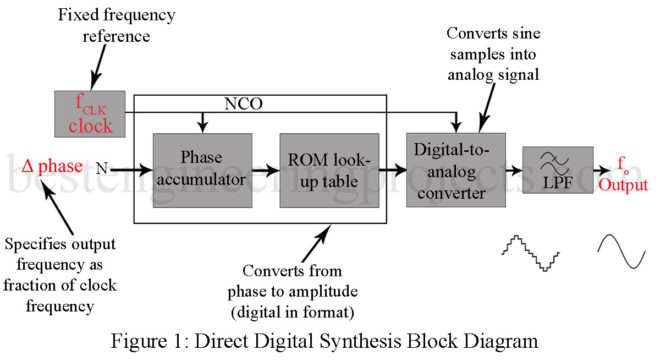Digital Signal Encoding Formats: Transmission of digital data using a binary format (+5 V-hi, 0.0 V-low) is usually limited to short distances such as a computer to a printer interface. Typically the binary data are transmitted serially over a single wire, fiber, or RF link. This requires that the binary data be encoded in such a way that highs and lows can easily be detected. The transmission systems typically use a serial transmission system that is either asynchronous or synchronous. This requires the addition of clocking information in the data…
Read MoreCategory: Electronic Tutorial
Code Error Detection and Correction
Codes and raw digital data are being transmitted with increasing volume every year. Unless some means of code error detection are used, it is not possible to know when errors have occurred. These errors are caused by noise and transmission system impairments. In contrast, it is obvious when a voice transmission has been impaired by noise or equipment problems. Redundancy is used as the means of error detection when codes and digital data are transmitted. A basic redundancy system is to transmit everything twice and to make sure that an…
Read MoreAlphanumeric Codes | Description and Types
Two of the most common alphanumeric codes schemes for binary data are ASCII, the American Standard Code for Information Interchange; and EBCDIC, the Extended Binary-Coded Decimal Interchange Code. Each of these codes can be found in many digital systems, with the ASCII code being the most prevalent. Types of Alphanumeric Codes The ASCII Code ASCII is a 7-bit code used for representing alpha-numeric symbols with a distinctive code word. The ASCII code was developed by a committee of the American National Standards Institute (ANSI) for the purpose of coding binary…
Read MoreDirect Digital Synthesis
Direct Digital Synthesis Direct digital synthesis (DDS) systems became economically feasible in the late 1980s. They offer some advantages over analog synthesizers but generally tend to be somewhat more complex and expensive. They are, however, useful for some applications as will be discussed. The digital logic used can improve on the repeatability and drift problems of analog units that often require select-by-test components. These advantages also apply to digital filters that have replaced some standard analog ones in recent years. The disadvantages of DDS (and digital filters) are the relatively…
Read MoreFolded Dipole Antenna
Folded Dipole Antenna: Recall that the standard half-wavelength dipole (Hertz antenna) has an input impedance of . Recall also that it becomes very inefficient whenever it is not used at the frequency for which its length equals (i.e., it has a narrow bandwidth). The folded dipole antenna is shown in Figure 1(a) offers the same radiation pattern as the standard Hertz antenna but has an input impedance of (approximately 4 x ) and offers relatively broadband operation. A standard Hertz antenna can provide the same broadband characteristics as the folded…
Read MoreLoop Antenna | Ferrite Loop Antenna
Loop Antenna A loop antenna is a single turn of wire whose dimensions are normally much smaller than a wavelength. When this condition exists, the current in it may all be considered in phase. This results in a magnetic field that is everywhere perpendicular to the loop. The resulting radiation pattern is sharply bidirectional, as indicated in Figure 1, and is effective over an extremely wide range of frequencies—those for which its diameter is about or less. The antenna is usually circular, but any shape is effective. Because of its…
Read MoreLog Periodic Antenna
The log-periodic antenna is a special case of a driven array. It was first developed in 1957 and has proven so desirable that its many variations now make up an entire class of antennas. It provides reasonably good gain over an extremely wide range of frequencies. It is, therefore, useful for multiband transceiver operation and as a TV receiving unit to cover the entire VHF and UHF bands. It can be termed a wide-bandwidth or broad-band antenna. Bandwidth is not to be confused with beamwidth in this situation. Check out…
Read MoreAntenna Arrays | Yagi-Uda Antenna
Hertz Antenna with Parasitic Element | Antenna Arrays The most elementary antenna arrays are shown in Figure 1. It consists of a simple Hertz half-wave dipole and a non-driven (not electrically connected) half-wave element located a quarter wavelength behind the dipole. The non-driven element is also termed a parasitic element since it is not electrically connected. The dipole radiates electromagnetic waves with the usual bidirectional pattern. However, the energy traveling toward the parasitic element, upon reaching it, induces voltages and currents but incurs a 180° phase shift in the process.…
Read MoreMarconi Antenna | Counterpoise and Radiation Pattern
The Marconi antenna is used primarily with frequencies below 2 MHz. The difference between the Marconi antenna and the Hertz antenna is that the Marconi type requires a conducting path to the ground, and the Hertz type does not. The Marconi antenna is usually a quarter-wave grounded antenna or any odd multiple of a quarter wavelength. Effects of Ground Reflection in Marconi Antenna A Marconi antenna used as a transmitting element is shown in Figure 1. The transmitter is connected between the antenna and the ground. The actual length of…
Read MoreTypes of Antenna Feed Lines
Antenna Feed Lines: If energy is applied at the geometrical center of an antenna, the antenna is said to be center-fed. If energy is applied to the end of an antenna, it is known as an end-fed antenna. Although energy may be fed to an antenna in various ways, most antennas are either voltage fed or current-fed. When energy is applied to the antenna at a point of high circulating current, the antenna is current-fed. When the generator energy is applied to a point of high voltage on the antenna,…
Read More








